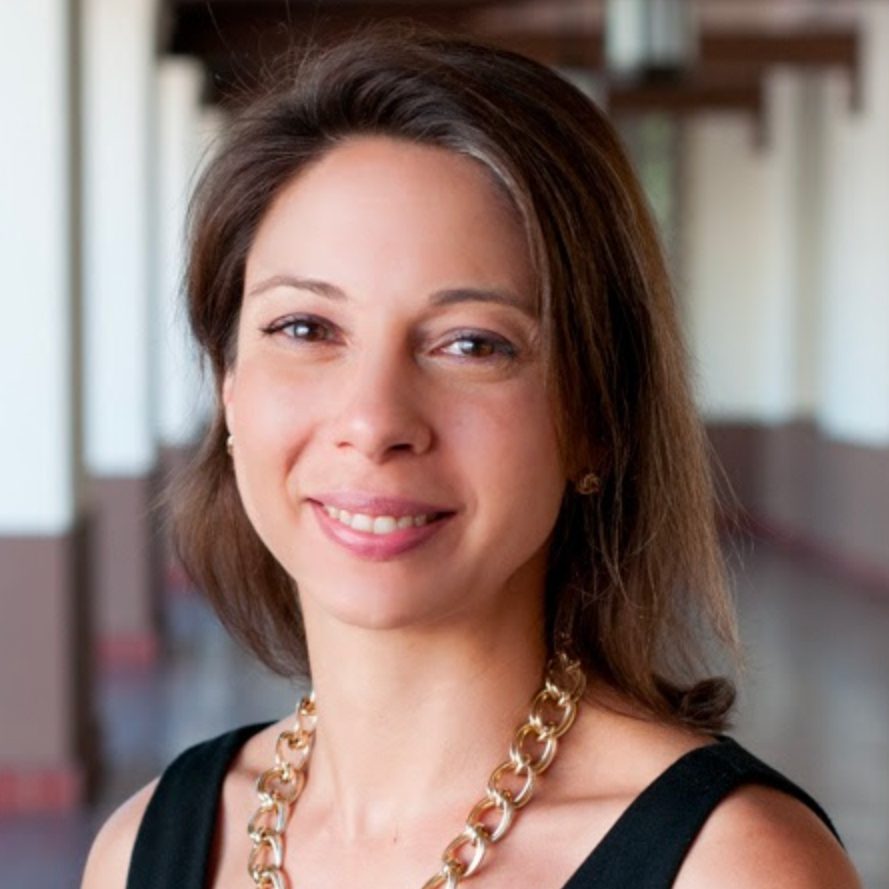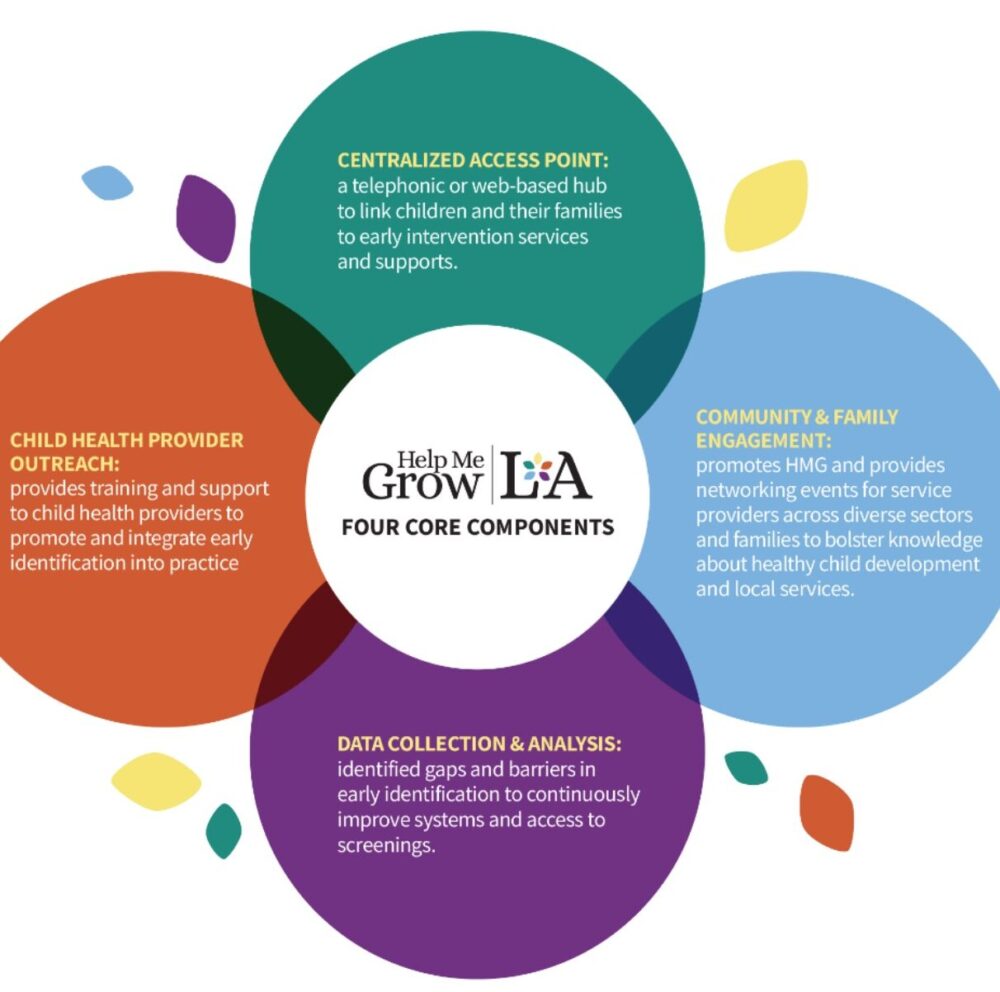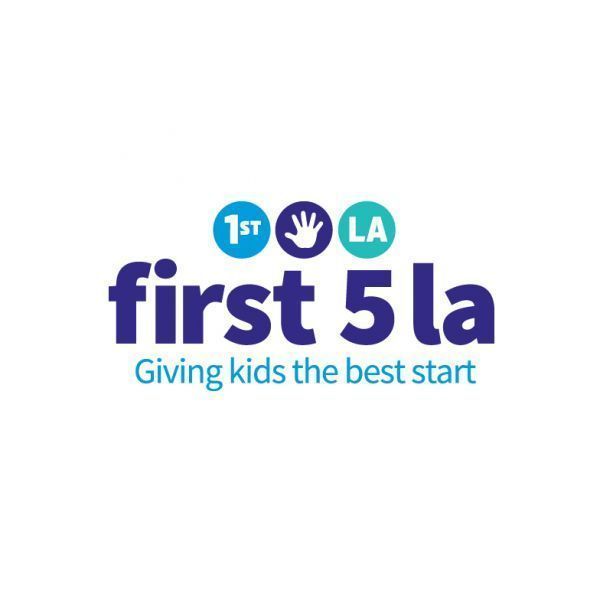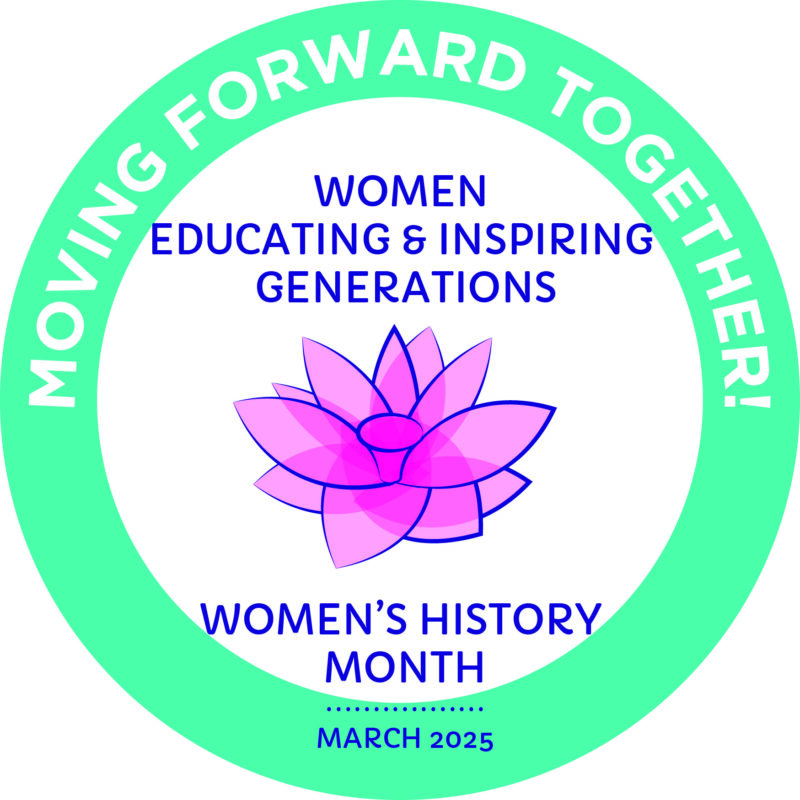August 17, 2023
In policy- and systems-level conversations about child care, the image evoked is often that of a formal center where many children are in separate classrooms with teachers. The reality, however, is that child care in the U.S. generally takes place in a home setting. The most common type of care, in fact, is referred to as Family, Friend and Neighbor (FFN) care, where the care of one or two children is entrusted to grandmas, aunties or trusted friends. Another common source of care for families is Family Child Care (FCC), where providers operate out of their own homes and often provide flexible hours and linguistically and culturally relevant care.
While the need for federal-level child care solutions has boiled in the U.S. for more than a century, the impact of the pandemic forced conversations about child care to the surface, as some parents struggled to find care amid center closures. Within those conversations also came several pressing systemic-level questions, chief among them: If child care centers have closed, and parents still need to work, then who will care for their kids?
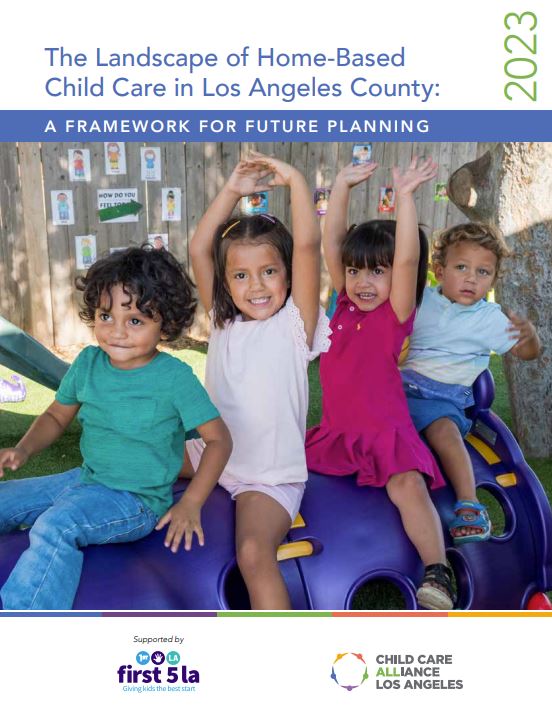
For First 5 LA, that question kicked off a multi-year landscape analysis of home-based child care in Los Angeles County to learn about the needs of FCC and FFN care and the families who use this type of care within the system of state-funded programs. Because FFN providers are license-exempt — meaning there is no required contact with any official government oversight agency — and FFN licensing is not as intensive as that of center-based care, little is known about how they care for children, what types of supports they may need and how to get it to them.
Asking similar questions, the Center for the Study of Child Care Employment (CSCCE) at Berkley also launched a multi-year study focusing solely on FFN and nanny care in California. Their preliminary findings show that most California families surveyed prefer this type of care because of a provider’s cultural background and language(s) spoken.
Both First 5 LA and CSCCE recently presented their respective study findings at a First 5 LA Commission meeting, alongside two FCC providers who shared their lived experiences. There were similarities and differences between the two studies, with one primary takeaway from both: FCCs and FFNs are woefully underpaid. FCCs receive a fraction of what center-based providers receive, while some FFNs don’t receive any payment at all. Additionally, professional development is not on the radar of FFNs, and covering basic expenses is challenging for both groups.
“The family child care sector throughout California, and Los Angeles in particular, needs help with ending the systemic injustice that has plagued our industry for far too long,” said Justine Flores, owner of Flores Family Child Care, during the meeting. Her statement was in reference to the well-documented systemic racism and sexism that have afflicted the sector, pushing many providers out of the conversation and into the shadows. Flores is a member of Child Care Providers United (CCPU), California’s child care union, which recently voted for a historic deal with the state to increase pay and establish a retirement system for state-paid providers.
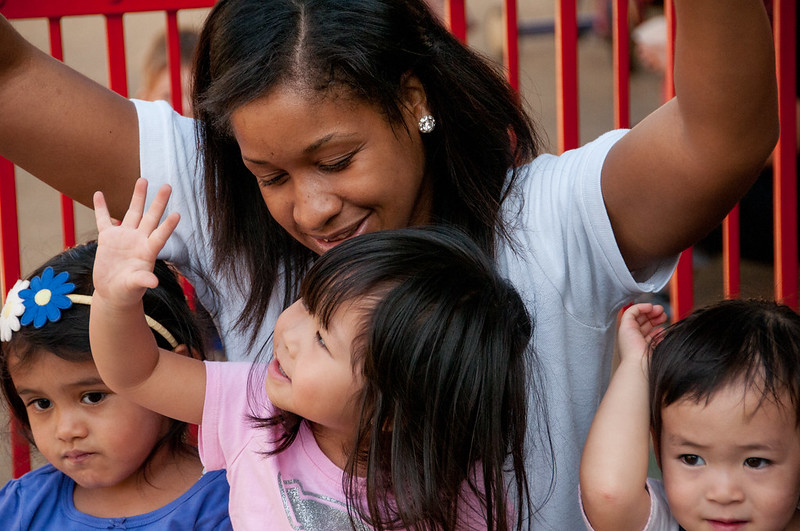
Just like First 5 LA and CSCCE, journalists also began asking more questions during the pandemic about what is known — and just as importantly, what is not known — about the child care sector and the caregivers who seem to work in the shadows. Their reporting has revealed a story of child care in the U.S. that is tremendously complex, with a sector consisting of a disconnected patchwork of different types of care, with a wide range of public and private supports. Recently, some journalists began covering the unique challenges facing home-based providers; their stories reflect many of the challenges outlined in First 5 LA’s landscape analysis.
At EdSurge, guest reporter Ashley Álvarez recounted the stories of several Los Angeles-based caregivers, most of whom made less than $4 an hour in return for providing care to neighborhood children. “I did it for the kids, not really because she paid me,” said Nataly Romero, who initially took care of her older sister’s kids for free. But when food and gas costs began adding up, she asked for compensation.
Jackie Mader, the early childhood reporter at The Hechinger Report, told the story of grandparent care in Hawaii and the supports those caregivers received to provide an educational experience for the children in their charge. Because many family, friend and neighbor caregivers see their role as helping someone they care about rather than a profession, many don’t access professional development opportunities. However, Mader found that there is a program in Hawaii called Tūtū and Me that provides guidance and access to educational supports for these care providers.
One aspect not covered in the First 5 LA or CSCCE reports but is a critical piece of the puzzle for home-based child care is the housing itself and the types of regulations that hamstring providers from being able to provide care out of their homes. In her series for EdSurge, “Why Housing Is a Key Building Block for Better Child Care,” reporter Emily-Tate Sullivan describes how rising housing costs have priced providers out of the market. And when they look for more affordable options, many discover discriminatory landlords that don’t want child care in their rental properties.
First 5 LA plans to draw continued attention to the needs of Home-Based Child Care providers. As a key form of care for many families, it is imperative that this sector gets the support it needs in order to continue to enable the job sector to grow and for kids to be nurtured in the process. This includes state-level investment, this includes state-level investments in the sector’s mixed-delivery system that prioritizes family choice and need.” For reference, we have included links to several articles and reports below focusing on this issue.
Center for the Study of Child Care Employment (Blog): Family, Friend, Neighbor, and Nanny Care in California: A New Study (Powell and Adejumo, 4/5/23)
The Hechinger Report: Grandparents, neighbors and friends are propping up the child care industry. They need help (Mader, 5/9/23)
EdSurge: ‘A Job That No One Sees’ (Álvarez, 6/2/23)
EdSurge: ‘The Truth Is, I Love the Work’ (Álvarez, 6/7/23)
Early Learning Nation: Decline of Home-Based Child Care Options Sours Parents’ Perception of the Child Care Market (Renew, 6/7/23)
EdSurge: Why Housing Is a Key Building Block for Better Child Care (Tate-Sullivan)
- Housing Is a Nightmare for Home-Based Child Care Providers (7/12/23)
- ‘God Forbid I Have to Move Again’: One Home-Based Child Care Provider’s Experience With Housing (7/18/23)
- In a Hostile Housing Landscape, Solutions Emerge to Support Home-Based Child Care Providers (7/27/23)
- New State Laws Will Ease Housing Burdens on Home-Based Child Care Providers (8/1/23)
Reports:
Home Grown: Home-Based Child Care Fact Sheet (5/25/23)
BUILD Initiative: State Scan of Family, Friend, and Neighbor (FFN) Policies and Supports
Home Grown: Supporting and Strengthening FFN Care: Honoring Family Choice and Recognizing the Need for Flexible Care
What Child Care Arrangements Do Parents Want during Nontraditional Hours? | Urban Institute
National Women’s Law Center: Sustaining Family, Friend, and Neighbor Child Care Beyond the Pandemic

